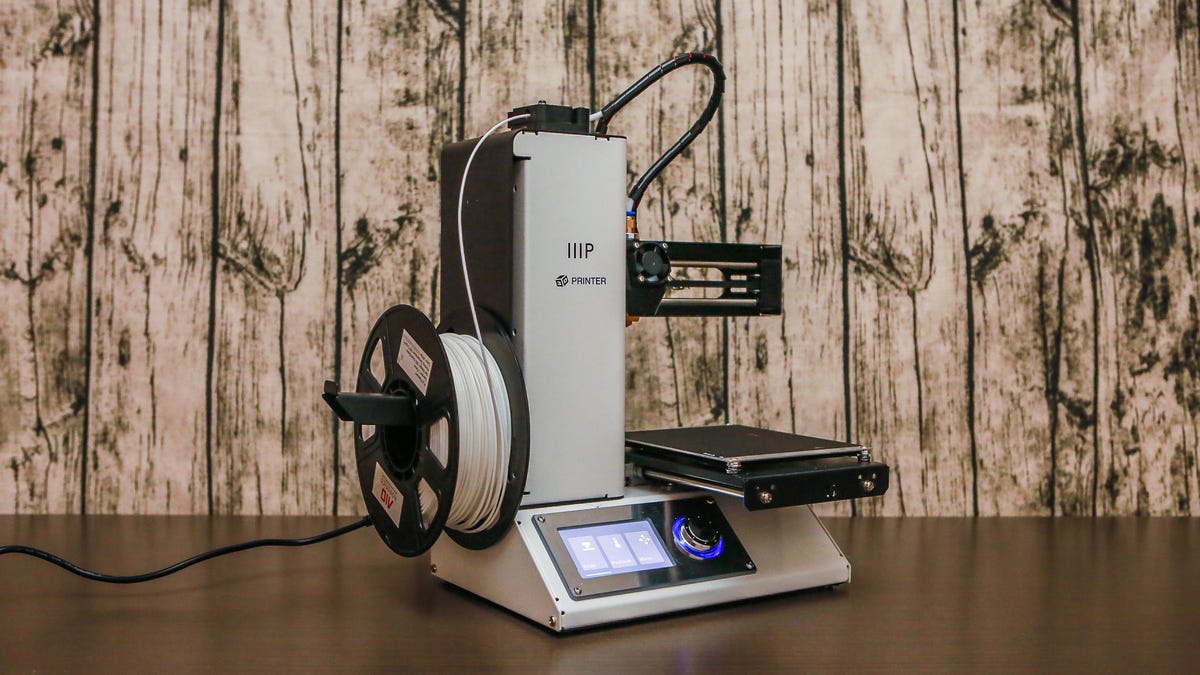 Why You Can Trust CNET
Why You Can Trust CNET A Beginner's 3D Printing FAQ
Top tips and advice for starting out in 3D printing.

Rounding up some of the best budget 3D printers, I learned a lot about the art and science of printing. It's not as simple as loading a 3D file, hitting print and sitting back, although the extra steps and follow-up work involved is well worth it if you want to create eye-catching stuff.
These are some of the big beginner questions I've gotten, and the major things I've learned through trial and error. Mostly error. These tips are deliberately simplified for a beginner audience. To really dive deep, check out the very active Reddit 3D printing community.
What material should I use to print with?
Most home 3D printers use PLA or ABS plastic. Professional printers can use all sorts of materials, from metal to organic filament. Some printers use a liquid resin, which is much more difficult to handle. As a beginner, use PLA. It's nontoxic, made mostly of cornstarch and sugarcane, handles easily and is inexpensive. However, it's more sensitive to heat, so don't leave your 3D prints on the dashboard of a car on a hot day.
Which brand of PLA is best?
Generally speaking, Hatchbox has never let me down, and runs about $20 for a full 1kg spool on Amazon. Some of the printers I tested only accommodate narrower 0.5kg spools. In those cases, I sometimes used a larger Hatchbox roll with a separate spool-holder (which, yes, I 3D-printed). Other times, I had good luck with AIO Robotics 0.5kg spools, which are a little more expensive, at $14 for 0.5kg. A 1kg roll prints a lot of stuff.
What color filament should I use?
I found most prints look best in plain white, if you're not going to otherwise prime or paint them. Primary colors are easy to use, but every time I tried something like a metallic or other unusual color, many of my prints were spotty or brittle.
What settings should I use?
Most 3D printers include or link to recommended software, which can handle converting 3D STL or other files into formats supported by the printer. Stick with the suggested presets to start, with one exception. I've started adding a raft, or bottom layer of filament, to nearly everything I print. It has cut down dramatically on prints that don't adhere to the bed properly, which is a common issue. If you continue to have problems, rub a standard glue stick on the print bed right before printing.
What are supports?
Your 3D models probably need some help to print properly, as these printers don't do well with big overhangs -- for example, an arm sticking out from a figure. Your 3D printer software can usually automatically calculate and add supports, meaning little stands that hold up all those sticking-out parts of the model. After the print is done, clip the supports off with micro cutters and file down any nubs or rough edges with hobby files.
Where do I find things to print?
Thingiverse.com is a huge online repository of 3D files for anything and everything you can think of. Pokemon chess set? It's there. Dyson vacuum wall mount? It's there. DIY Lego-style blocks? Yep.
When you're ready to create your own designs, there are a ton of software packages to choose from, but it's easiest to start with the browser-based free TinkerCad app from Autodesk.
Which 3D printer should I buy?
Check out our roundup of entry level and step-up 3D printers for some initial ideas.
Laptops with the best battery life: See the top laptops and 2-in-1 PCs with the longest battery life.
Fastest gaming laptops, ranked: All the most-powerful gaming laptops tested in the CNET Labs.
More news and reviews for PC and Mac laptops, tablets and desktops.

